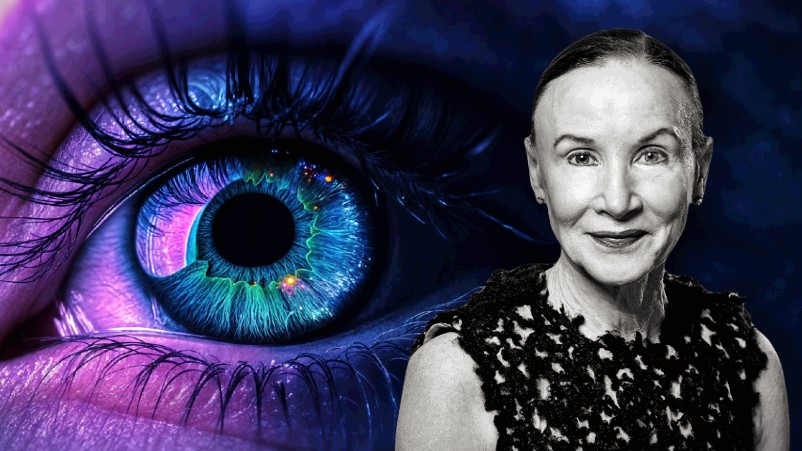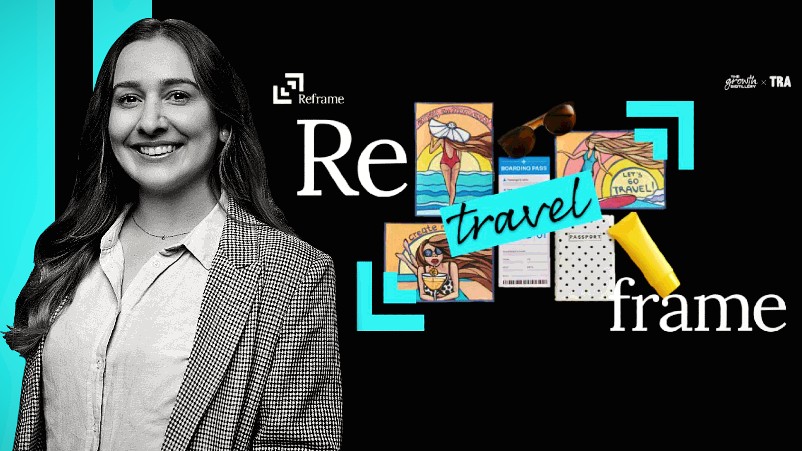‘Monumental gains’: SCA chief marketer Nikki Clarkson on how broadcaster bet the farm building new customer platform from zip to 1.5m users, collapsed exec silos and forced new marketing skills beyond brand comms

Southern Cross Austereo chief marketers Nikki Clarkson: Big shift from competing for share of voice, top of mind recall toward performance-led acquisition and experience-driven retention.
Just about every B2C business is trying to build superglue stickiness into their user platforms. Nimble start-ups, at least prior to the big VC squeeze, were the poster children, leaving big legacy firms foundering in their wake. But SCA’s pivot to uber app Listnr is a standout exception, reinventing its digital audience business and building a new brand from scratch – pretty much all in-house. Launched mid-Covid in a bid to see off local incursion from the likes of Apple, Spotify and iHeart, Listnr has already powered past 1.5m signed-up users. Now SCA is using the logged-in data – alongside a new martech stack and digitally upskilled marketing department – to move the needle across acquisition, retention and engagement, while giving advertisers sharper incentive to spend. CMO Nikki Clarkson said the pivot required the entire business to suspend traditional thinking – from finance, sales, marketing, content, distribution, research and tech – without dropping the ball on its day-to-day game. Then the business had to go through a major systems overhaul while learning the language of tech and customer experience. But she says the pay-off and ROI is already landing, with marketing alone making “monumental gains” by aligning sharper digital tools with brand-building assets. Her takeout for those planning mass audience transformations? Go broad or go home.
What you need to know:
- Five years on from starting to think about how to head off global platforms, Southern Cross Austero’s Listnr app – a master app for audio streaming – has notched 1.5m installs. The firm’s streaming business is powering, underpinned by richer data.
- SCA built the tech in-house, then tooled up with a new martech stack.
- The whole business had to align on what was required – and how to deliver on the fly, building much of the tech in-house, reversing out of narrow blind alleys and literally learning a new language in a bid to turn a historically analogue operation into a tech business.
- Marketing boss Nikki Clarkson says the marketing function similarly re-tooled its capabilities, from traditional skillsets and strategy to a digital and data-led approach that she says is delivering “monumental gains” and major ROI back to the broader business.
- Get the full download here.
The more targeted we were able to be with our digital advertising, the more efficient it was ... we had [new] capability coming into our marketing mix. One of those was to suppress anyone who had already downloaded the app. It sounds really simple, but … We started to see monumental gains around how we’re able to grow audiences.
Aside from out-of-home, cashed-up global platforms are disrupting every media business, audio included. Five years ago Southern Cross Austereo knew it had to re-engineer its business or be outmuscled. So it started work on one app, Listnr, to rule them all. Developing everything in-house, there were early blind alleys around focusing too narrow – with parallels for SCA’s marketing function. A major upskilling exercise from a traditional brand reach and top of mind focus to deep in the weeds of digital marketing and CX – or AX as chief marketer Nikki Clarkson calls it – is now paying off, big time.
“We knew that in order for our business to be future-proofed, that we needed to have a relevant and robust digital audio solution,” says Clarkson.
She says the whole business grasped that the audio game has changed, presenting an existential threat to incumbents.
“We very quickly realised that we were no longer competing with just the Australian radio brands. We're now taking on global powerhouses such as Spotify, Apple, and iHeart. So we needed to start behaving like a technology brand.”
Hence five years ago SCA began to build the Listnr app from scratch – keeping everything in-house.
The firm already had a strong digital presence through its Hit and Triple M apps, and had done a deal with US-firm Podcast One to enter podcasting. Consumption of digital audio was therefore already strong – in 2019, circa 8.8m people were consuming digital audio “either daily, weekly or monthly,” per Clarkson. “So it was a robust category already.”
But SCA needed to bring everything together – and that meant aligning the entire business to work out the plan of attack, thrash out the strategic roadmap, and then deliver on the run, without dropping the ball on its day-to-day game in a market where media stocks can be punished excessively.
Clarkson says that business-wide process, involving a “cross-functional team across sales, content, marketing, product, technology and research” was critical to SCA’s success. And it is a success: versus 8.8m digital audio listeners when it started the project, SCA’s June numbers show it has notched 11.6m.
“That’s an increase of 32 per cent – and the biggest increase is the daily consumption of digital audio,” says Clarkson. “So not only are we building scale, but we're starting to build consumption of daily audio as a habit.”
Go broad or go home
The business decided to keep tech development in-house. That can prove risky, expensive and slow, especially for the uninitiated, but Clarkson said SCA decided it was too important to outsource.
“We were absolutely committed to being in control of our destiny, to building something that would enable us to go to market quickly –and also something that would provide the ultimate audience experience,” says Clarkson.
The underlying goal for Listnr was – and is – to “build a digital audio destination for all Australians”, says Clarkson. That broad ambition was key in keeping the project on track – and helped prevent SCA from going down narrower blind alleys in the test and learn process.
“We learned that if we could build something broad, it would have the biggest opportunity to prop up an ad funded audio solution,” she says.
“Without going into too much detail about our prototypes, there are a couple of those where the common element that both were narrow. And we quickly realised that digital audio was for everyone. It had broad appeal, both from a behavioural point of view in terms of frequency of consumption, but also across all demographics,” says Clarkson.
“So ultimately, throughout that testing and learning, that's where we landed: Building something we refer to as ‘The House of Listnr’; a one-stop-shop for all our existing digital audio consumers and future digital audio consumers.”We very quickly started to see the direct correlation between the digital advertising and the app install behaviour on a weekly basis. Roughly 60 per cent of our app installs are directly attributable to digital advertising.
Tech, capability overhaul
It wasn’t SCA’s first digital rodeo. The Triple M, Hit apps had been in market for a decade and were individually performing well. But creating one ring to rule them all – and then migrating those app audiences across to Listnr – was a major undertaking for a historically more analogue business.
It required a major investment in tech – and for SCA’s teams to properly understand that tech. That meant literally learning a new language, and digitally retooling the marketing department, both in terms of acquisition and retention via customer experience. But it’s already paying major dividends in terms of both growth and cost efficiencies, says Clarkson.
SCA CTO Stephen Haddad led the development of the tech stack – after input from the cross-functional team to work out what the tech actually needed to deliver. Implementing Salesforce was the upshot of that process.
After that, “the first thing we did was employ a CX expert who was very proficient in marketing, had worked in app-based businesses and know how to use the tech stack,” says Clarkson.
Plus, they taught SCA’s marketing team how to speak CX amid an accelerated digital upskilling programme.
“We had to quickly learn that language, so that we could effectively communicate with our tech team and we could start to get on the same playing field, so we spent a lot of time doing that,” says Clarkson.
“We also understood very quickly that our media capabilities needed to increase, particularly around digital acquisition and performance-based media.”
So it pitched for a digital media agency and hired OMG-owned Resolution Digital, along with an internal app-based media specialist.
“They had been involved significantly with the development of the [women’s fitness] Sweat app. And that enabled us to get up to speed with Resolution very quickly in that we had a skilled person who similarly understood those areas of acquisition and digital attribution-based media and advertising,” adds Clarkson.
“So with those parts, plus the appetite across the existing marketing team, to upskill themselves, both formally and informally, we started to develop a marketing strategy.”
It didn’t take long to move the needle.
“We very, very quickly started to see the direct correlation between the digital advertising and the app install behaviour on a weekly basis,” says Clarkson.
“Roughly, 60 per cent of our app installs are directly attributable to digital advertising.”
The cross-functional work group around AX is marketing, product, distribution, content, insights … It's everything from one-to-one personalisation enabled by email marketing, push notifications, search, one-to-one social … all these amazing capabilities that we now have within the marketing toolbox, thanks to the transformation of the business.
The shift to AX
Alongside customer acquisition, SCA then piled into customer experience, or CX. Except they called it AX, or audience experience.
“The big change in our team is that we're fiercely focused on audience first, and we're focused on driving new audiences into the app. And as the capabilities start to emerge with our martech stack, we're focused on retaining that audience as well. So that's a big shift from competing for share of voice, top of mind recall for radio brands,” says Clarkson.
That focus goes well beyond marketing.
“The cross-functional work group around AX is marketing, product, distribution, content, insights … to really make sure that our strategy is in line with the capabilities of our martech stack as that's becoming unlocked,” she says. “It's everything from one-to-one personalisation enabled by email marketing, push notifications, search, one-to-one social … all these amazing capabilities that we now have within the marketing toolbox, thanks to the transformation of the business.”
Long and short
Clarkson says the business was surprised at how quickly the martech stack and digital push started to drive results. But she says the effect of SCA’s existing reach, and other media channels, cannot be underestimated.
“We had this fantastic megaphone … we could target 7 million Australians listening to our radio stations, “ she says. “That got us up and running really quickly – and we’ve seen consistent growth week on week since then.”
Plus, SCA has regional TV assets. Clarkson simultaneously invested in other media channels “to quickly accelerate Listnr” in terms of brand saliency. She needed a consistently big bang.
“We were up against digital stalwarts – Apple, iHeart, Spotify. We knew we needed to gain ground really, really quickly. So we used a combination of mass media and highly targeted digital media.”
Clarkson says the combination of performance and brand media channels working together has been critical in driving growth.
“We could see that when everything was running at adequate levels, everything performed better.”
That means the marketing team is now full funnel, brand and performance focused, she says.
“We have transformed from a traditional marketing function, using predominantly above-the-line media to drive top of mind awareness and recall for our radio brands, to a progressive, data-led team of experts diligently growing, or contributing to the growth of our digital audio and our known digital audio audience.”
Tailored crime pays
The company is now better tailoring its marketing content to those known audiences.
Crime audiences, says Clarkson, “essentially just want more crime. It’s all about binge-worthy crime”. Likewise comedy audiences respond better to campaigns “that are for laughs”, she says, with SCA able to follow the results from campaign to listens in the app as a result of its martech investment.
“We just improved the consumer journey over time leveraging our capabilities from a tech point of view, and starting to implement as many touch points as we possibly could.”
‘Monumental gains’
The ability to map existing app users to its advertising campaigns is also paying off in terms of higher ROI and much less marketing budget wastage.
“The more targeted we were able to be with our digital advertising, the more efficient it was,” says Clarkson. “With the implementation of the Salesforce stack, we had [new] capability coming into our marketing mix. One of those was to suppress anyone who had already downloaded the app. It sounds really simple, but … that got the digital ecosystem working really efficiently. We started to see monumental gains around how we’re able to grow audiences.”
How monumental?
“They were upwards of 30 per cent more efficient,” she says. “Just doing the basics such as minimising wastage in advertising has delivered significant ROI back to the company. And that’s not just a marketing win, that’s a win for the entire business.”
The core learnings would be definitely the cross-functional approach. I would firmly recommend opening up the learning, from the get-go and being open to new ideas from everywhere in the business. Plus, having a very clear strategy with very clear KPIs.
Discovery, more engagement, more downloads
The next phase is discovery – getting those crime, comedy or family audiences to consume “as much of that breadth and depth of content as possible,” across its circa 600 podcasts, plus stations and shows, says Clarkson.
The logged-in app data and tech set up provides ample opportunity to do that through smarter recommendations and personalisation, though Clarkson won’t be drawn just yet on how much those efforts have boosted engagement and time spent listening.
“We’re early in the process, we’re 18 months down that journey,” she says. “The best is yet to come.”
Lessons learnt
So after transforming a largely analogue business to a martech-powered data-driven digital operation, what are the takeouts?
Effectively, get everyone involved, don’t go too narrow, and be crystal clear on the metrics of success.
“The core learnings would be definitely the cross-functional approach,” says Clarkson. “I would firmly recommend opening up the learning, from the get-go and being open to new ideas from everywhere in the business. Plus, having a very clear strategy with very clear KPIs – which is what aligned us as a team.”
Listen to the podcast here.


